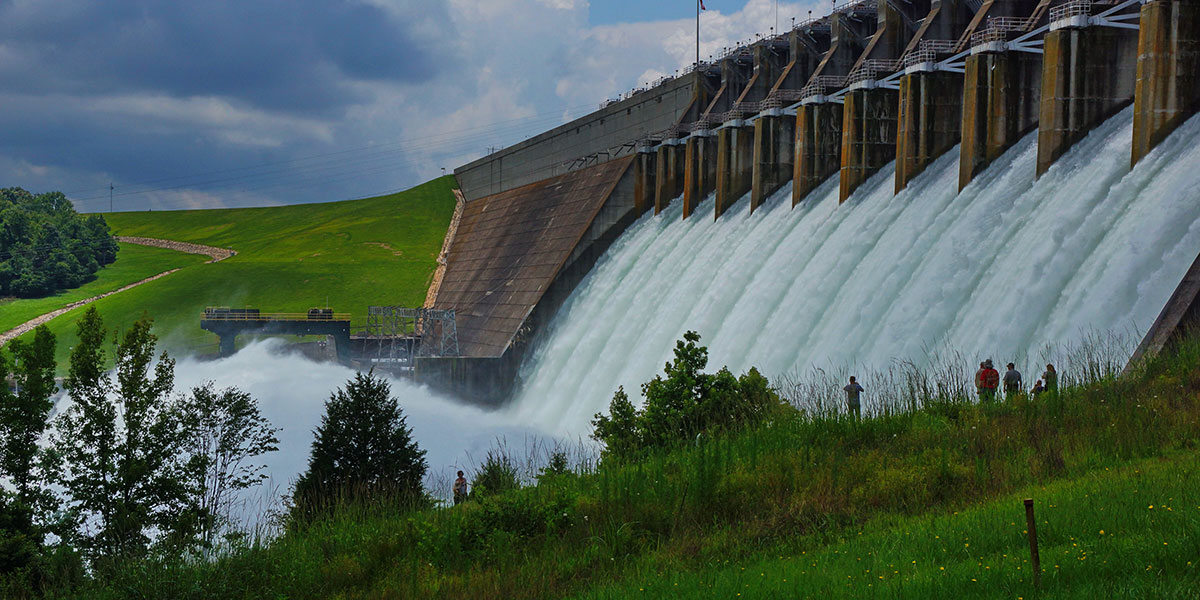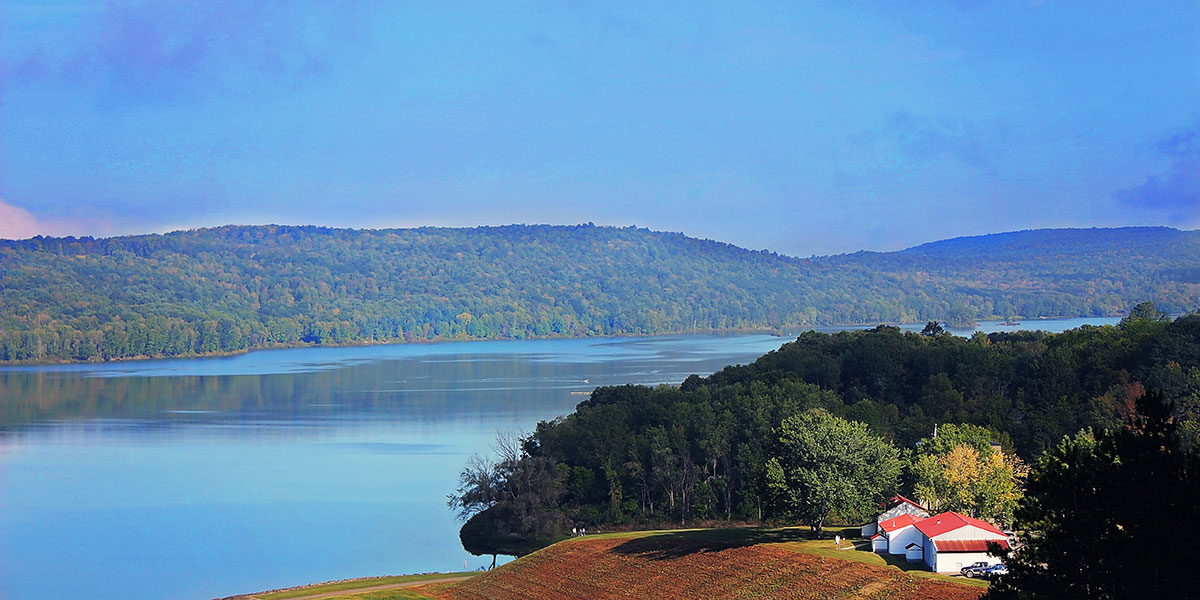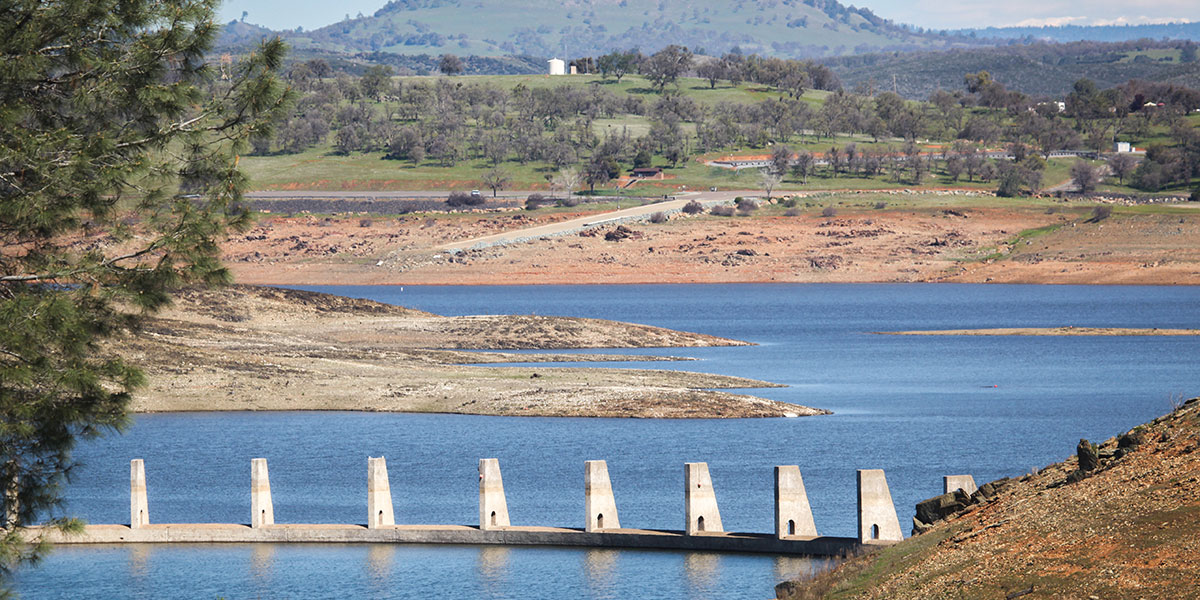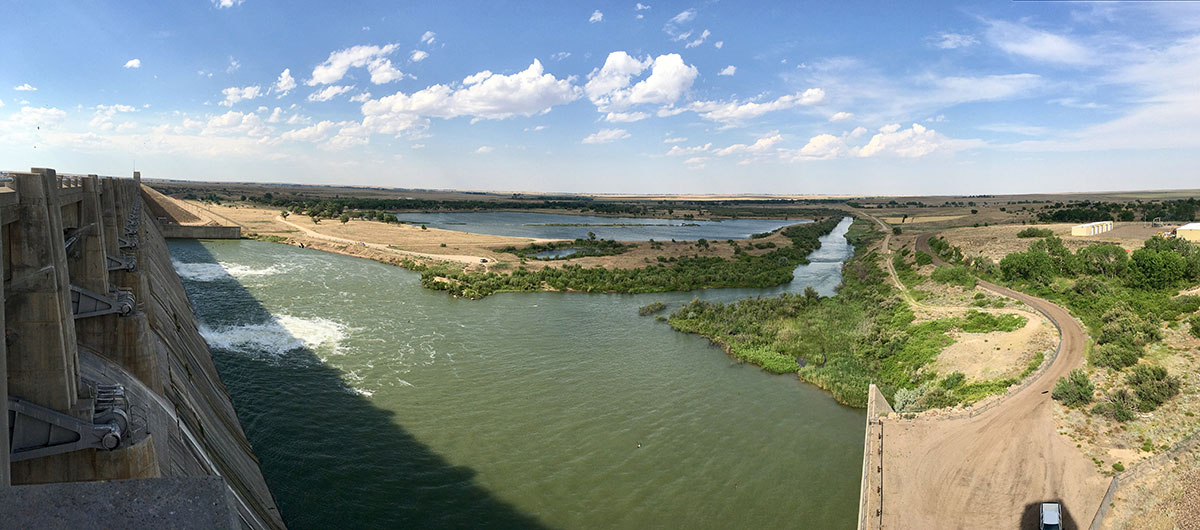
By Anna Nordseth
The United States Army Corps of Engineers (USACE) owns and operates more than 500 reservoirs across the continental U.S. These reservoirs provide a means of harnessing rivers for navigation, flood control, water supply, hydropower, and recreation. Today, many of the Corps’ reservoirs are decades old and subject to ever-changing environmental and social pressures that threaten their ability to function as intended.
To better understand the state of the Corps’ reservoirs, Martin Doyle and Lauren Patterson—director and senior policy associate, respectively, for the Water Policy Program at Duke University’s Nicholas Institute for Environmental Policy Solutions—collaborated with the USACE to conduct a large-scale analysis of Corps-owned and -operated reservoirs.
“Most major reservoirs in the U.S. were designed and built 50 to 100 years ago to meet their needs then as well as the anticipated needs of the future,” said Patterson. “Today’s reality includes a warming climate, shifting populations, technological advancements in water efficiency and energy sources, and new policies and regulations, such as the Endangered Species Act. All of these influence the amount and timing of water in a reservoir.”
Doyle and Patterson’s investigations focused on three central questions:
- How much have conditions changed from when reservoirs were designed?
- Are reservoirs meeting their designated management goals?
- What options are available when conditions are changing and reservoirs are no longer able to meet their management targets?
The results of this five-year project include four interactive tools that visualize data central to exploring these key questions and five publications that provide insight into the opportunities and challenges of improving the Corps’ reservoir management for continued sustainability.

Building Water Data Infrastructure
To begin addressing their questions about reservoir conditions and management goals, Doyle and Patterson first needed to amass historic reservoir data from across the country.
The Corps has collected data on various aspects of reservoir operations since the time of dam construction. However, the structure of the USACE—with each of the 36 districts making independent decisions—has led to considerable differences in data formatting, standardization, and terminology.
While a 2013 executive order mandated all new data be stored in machine-readable formats open and accessible to the public, much of the historic data remains in non-machine-readable formats. “The internet did not come online commercially until the 1990s,” wrote Doyle and Patterson, “after 98% of currently operating reservoirs were already constructed.“
Through the process of compiling data, Patterson and Doyle learned that there are big differences in data availability and accessibility between districts. Such variations present a substantial challenge for researchers and reservoir managers seeking to both understand trends across time and respond to issues in a timely manner.
Doyle and Patterson compiled reservoir data from across districts to create a standardized database of Corps-managed water resources, highlighting the challenges and opportunities they discovered during the process. Such standardized data infrastructure allows for large-scale analyses that span districts, permit the evaluation of large-scale trends, and enable managers to make timely management decisions.

Comparing Conditions from Reservoir Design to Present Day
Commissioning a new reservoir requires an immense amount of planning. Each dam is designed based on current and projected environmental, social, and regulatory factors. Yet even the best-laid plans can fail to predict major changes such as climate change and the introduction of new regulations like the Endangered Species Act.
With this in mind, Patterson and Doyle sought to understand how much conditions had changed across the country from when reservoirs were first designed. They conducted a case study of nine reservoirs, comparing conditions at the time of reservoir design with current conditions by looking at reservoir design documents. They found that some reservoirs are, in fact, operating under very different conditions from their original design, particularly when it comes to sedimentation rates and water supply needs.
Many design documents predicted that the future would look much the same as conditions at the time. Instead, the ensuing decades brought warmer temperatures, changes in the frequency and intensity of precipitation, new regulations, and population surges in urban environments.
Reservoir managers can adapt to changing conditions by updating water control plans. For instance, a reservoir in North Carolina recently had its operations updated to improve downstream environmental conditions and more closely reflect natural streamflow. However, more significant changes may require reallocation—a more formal, binding legal process that requires stakeholder input—to sufficiently adapt.
“As conditions change, controversies and litigation around Corps reservoir management will likely continue,” explained Patterson. “This highlights the importance of clearly documenting changing conditions through consistent and ongoing data collection and analysis to facilitate adapting reservoir operations in a timely manner, thereby minimizing controversy.”

Meeting Operating Targets in a Changing World
Doyle and Patterson next wanted to know if reservoirs are meeting their daily operating targets, with the correct amount of water stored in each reservoir to carry out its designated purpose. Reservoirs that deviate from their operating target, either frequently or by large amounts, need to be further evaluated to avoid negative consequences for the people who depend on them.
The Corps operates only 6 percent of U.S. reservoirs, but these comprise nearly 40 percent of reservoir storage volume. Many of USACE’s reservoirs are more than 40 years old and, since construction, have either undergone significant environmental changes or need to meet different societal demands.
Using Patterson and Doyle’s standardized water database and interactive data tool, users can assess the timing, frequency, duration, and magnitude of departures between reservoir levels and their goals.
Patterson and Doyle’s analysis showed that the majority of reservoirs were consistently meeting operating targets. However, 13 percent of reservoirs were experiencing frequent and large departures from their goals.
“Most reservoirs struggling to meet their management goals were due to water shortages in the Southwest, an area with higher temperatures, low rainfall, and a rapidly growing population,” said Patterson.

Adapting to Changing Conditions Under Current Policies
Reservoirs are built to last. The physical structure of the reservoir is fixed and requires huge, expensive efforts to change. Operational protocols, however, can be modified to alter the amount of water in the reservoir and how quickly that water is released downstream.
With the knowledge that some reservoirs are failing to meet operating targets, Doyle and Patterson directed their attention to assessing policies that allow or prevent reservoir management adaptations.
“Reservoir operations must respond to changing conditions, such as climate, water demand, regulations, and sedimentation,” said Patterson. “Policies must allow reservoir operators to respond quickly to short-term emergencies while balancing the due process needed to ensure longer-term changes to operations do not have unforeseen environmental or societal consequences.”
As with their approach to water data collection and management, Corps districts and divisions have varied tactics for adapting operations in the face of changing demands. This decentralized decision-making has led to a slow creep toward a more informal form of management.
“The process of updating a water control plan or reallocating reservoir volumes is so unwieldy and cost-prohibitive that many reservoirs cannot adapt to changing conditions in a timely process,” said Patterson. “Reservoirs may rely on more discretionary and temporary departures in the interim.”
Patterns of adaptation to changing demands vary regionally. For instance, the Southwest Division has experienced huge increases in water demand due to population growth and has the resources to formally reallocate reservoir storage.
Reallocating reservoir volumes requires an impact statement that thoroughly analyzes possible short- and long-term consequences. This process is necessary for water supply purposes because the Corps is signing legally binding documents with local governments to contract out space in the reservoir to hold water.
Moving forward, a major challenge for the Corps will be to balance the adaptive, yet short-term local-level responsiveness with longer-term centralized planning that will ensure the sustainability of reservoirs into the future.




